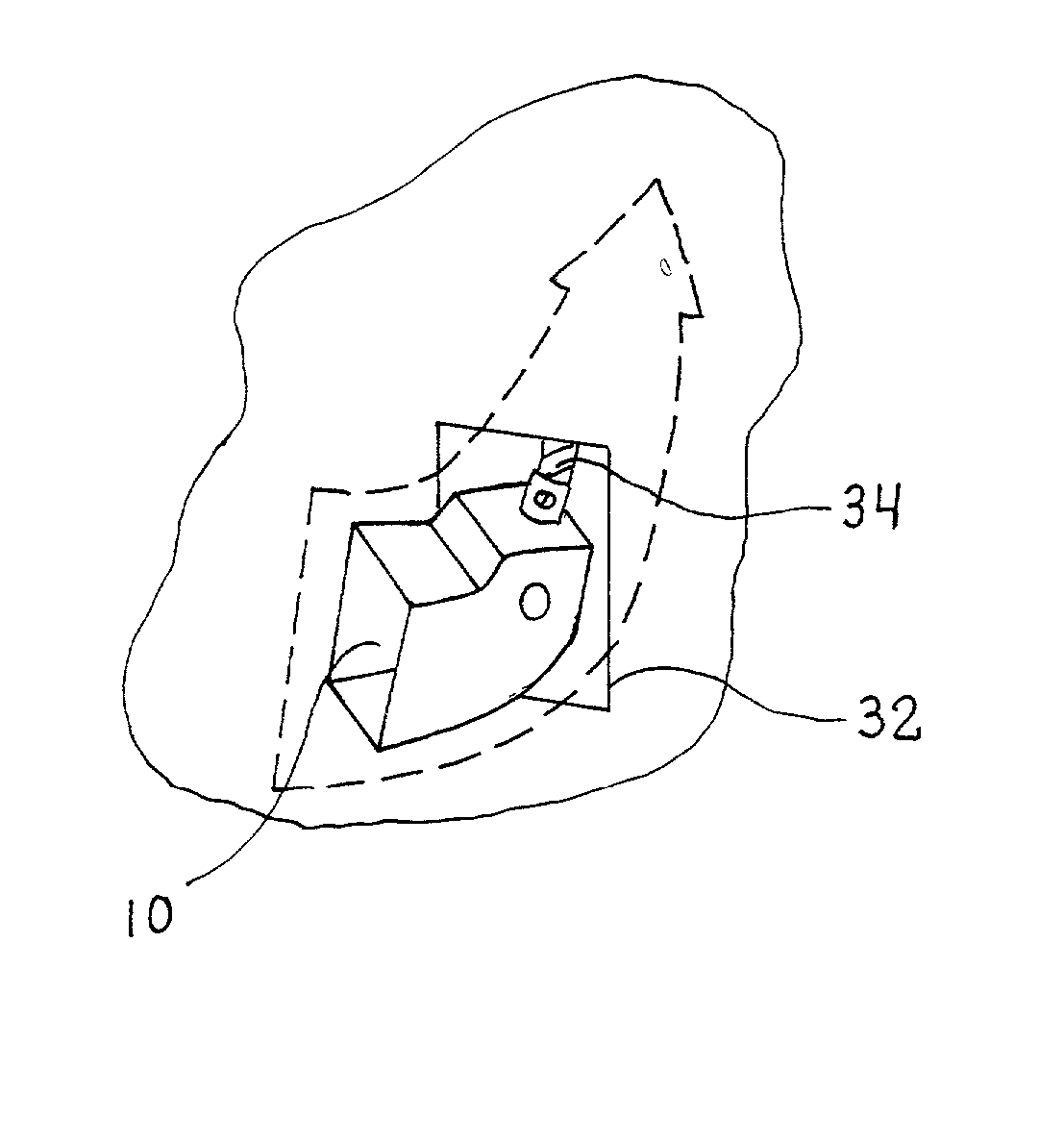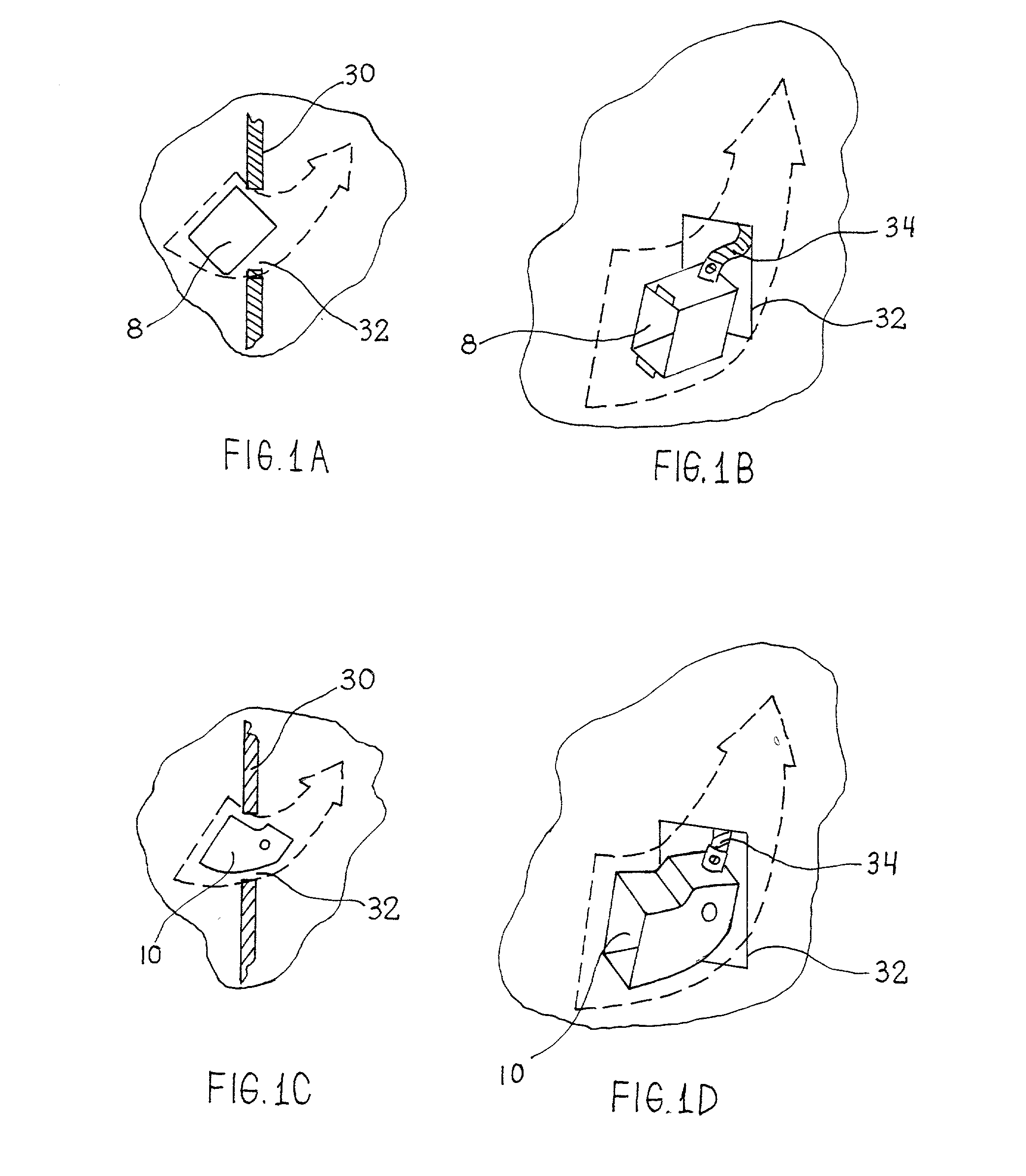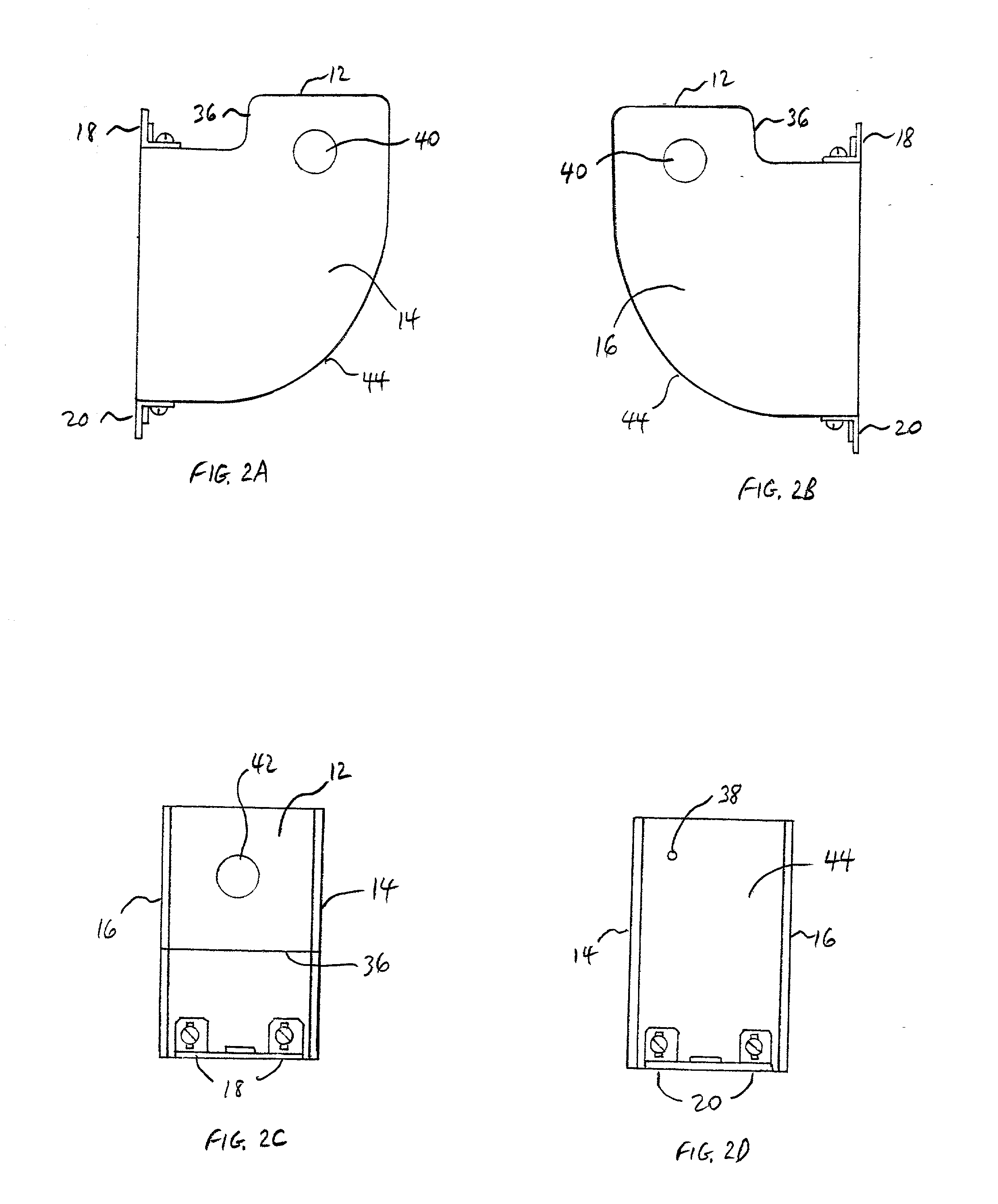Cut-in box
- Summary
- Abstract
- Description
- Claims
- Application Information
AI Technical Summary
Problems solved by technology
Method used
Image
Examples
Embodiment Construction
[0051] The present invention provides an improved cut-in box, an improved mounting bracket that can be used with an improved cut-in box or several other types of cut-in boxes, and an anti-short mechanism to minimize electrical shorts between a metal cut-in box and one or more electrical cables. The present invention can also be applied to a cut-in box for one or more optical fiber cables to be optically routed through a wall opening. While the discussion below is directed to an application of the invention to secure one cut-in box to a wall opening, the invention can also be applied to a "gang" or "bank" of cut-in boxes mounted in adjacent proximity in a wall opening. The invention can also be applied to cut-in boxes installed in the walls of large containers or vehicles (e.g., automobiles, airplanes, ships, trains, and so forth), as well as cut-in boxes installed in the walls of buildings.
[0052] FIG. 1A illustrates a side view of a conventional cut-in box 8 being inserted through an o
PUM
 Login to view more
Login to view more Abstract
Description
Claims
Application Information
 Login to view more
Login to view more - R&D Engineer
- R&D Manager
- IP Professional
- Industry Leading Data Capabilities
- Powerful AI technology
- Patent DNA Extraction
Browse by: Latest US Patents, China's latest patents, Technical Efficacy Thesaurus, Application Domain, Technology Topic.
© 2024 PatSnap. All rights reserved.Legal|Privacy policy|Modern Slavery Act Transparency Statement|Sitemap



